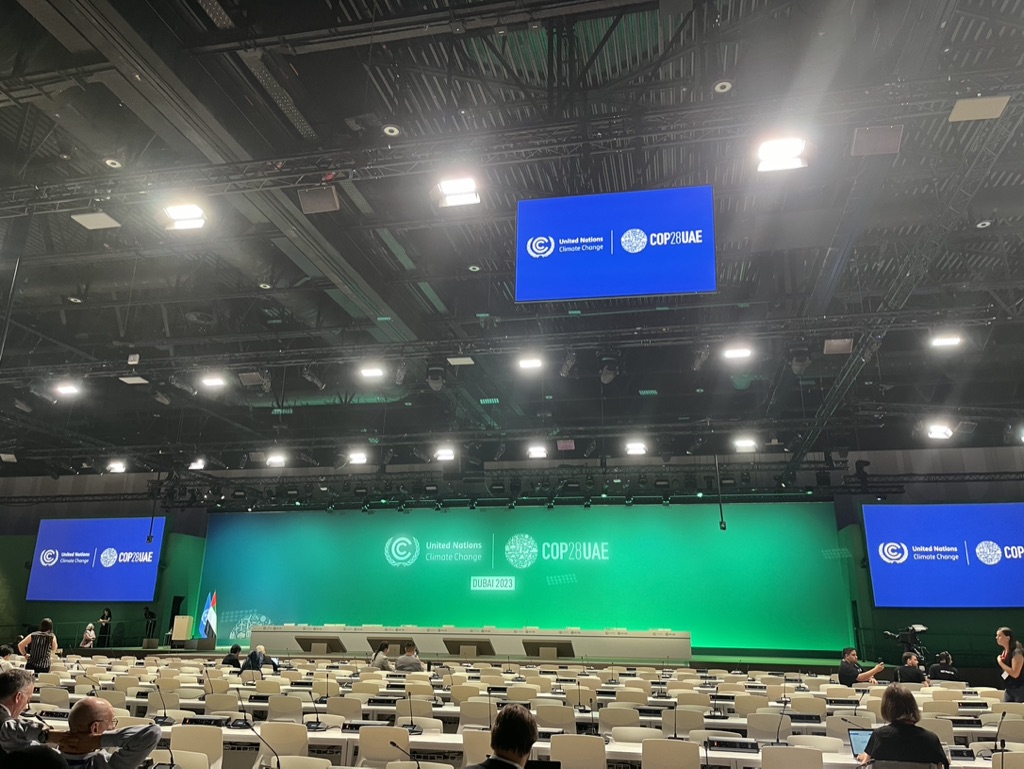
Report from COP28: the difficult question of who pays
The international climate negotiations are faced with solving a whole host of highly contentious issues in addition to the question of how to reduce emissions. The reality of climate change is that global temperatures have already risen, and impacts are already being felt. This means that helping people who are most affected, especially those in particularly vulnerable positions, to deal with its impacts is an important and emotionally charged part of the negotiations. In climate negotiations jargon, this is referred to as adaptation and has been at the centre of many of the difficult discussion that have been held in Dubai over the last 11 days.
Yesterday morning, with only three days of negotiating time officially still on the clock, a draft negotiating text on a Global Goal on Adaptation was released. The Global Goal on Adaptation comes from the Paris Agreement – the same international agreement that set the well-known goal of limiting global temperature increases to 2°C (or better, 1.5°C) above pre-industrial levels. The Global Goal on Adaptation has not received as much publicity, partly because it has been much more difficult to grasp. It seeks to “enhance adaptive capacity, strengthen resilience and reduce vulnerability”, combining sustainable development with adequate adaptation. The last two years have seen concerted efforts to better understand what this goal means in practice, how to set about achieving it, and how to monitor whether this is being done.
In a first plenary discussion yesterday afternoon, where countries outlined their initial views on the negotiating text, clear divisions were still visible. The core of the difficulties revolves around who pays for what, and what level of obligation there is to do so. Analyses of adaptation finance in advance of the COP once again highlighted a problem of insufficient finance. The United Nations Environment Programme’s Adaptation Gap report found that the adaptation finance needs of developing countries are 10 to 18 times as big as international public finance flows. The adaptation finance gap is now estimated at between 194 and 366 billion US dollars a year.
In the negotiations this concern has translated into two key debates. The first is around the inclusion of the term equity and the pithy phrase common but differentiated responsibilities and respective capabilities. Developing countries are fighting for this phrase, which is one of the key principles of the UN Framework Convention on Climate Change, to be included in the new text on the table. The reasoning behind this is that it recognises both the responsibility that sits on the shoulders of developed countries due to their high emissions in the past and the higher capacity that they have to act.
The second debate has circled around text on the means of implementation of targets outlined under the Global Goal. Here it is being argued that text around finance, technology and capacity-building is too vague and voluntary rather than creating concrete obligations. The worry is that this will lead to unpredictability and the persistence of adaptation gaps. It is yet to be seen how these discussions will play out as the clock ticks down. What is certain is that negotiators have late nights ahead of them if they are to work towards a satisfactory solution.

Insight by
Sarah Nash
wissenschaftliche Mitarbeiterin

